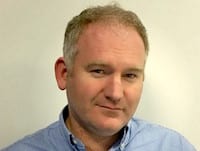
WallachBeth Capital, a provider of institutional execution for buy-side investment managers, recently appointed quantitative trading veteran Matthew Rowley to the newly created role of chief technology officer, signaling the firm’s commitment to delivering customized services that address specific and often complex order-execution and related business-process needs.
The company’s founders, Michael Wallach and David Beth, “have a vision of the industry becoming even more technologically driven,” Rowley told Markets Media.
Rowley joined WallachBeth from Crédit Agricole Cheuvreux, where he was credited with helping the firm attain a leadership position in the global electronic brokerage space.
“My main focus had been more on the algorithmic side — slicing and dicing of orders,” said Rowley, who holds an advanced degree in applied statistics from Oxford University. “Something that’s been really interesting to me throughout my whole career is artificial intelligence. I’ve been working on and off trying to integrate that into various firms I’ve been at, in different products. But it’s only in recent years that some of the cutting-edge techniques are such that you can get near-human performance in some aspects.”

Matthew Rowley, WallachBeth
Rowley’s background includes senior executive roles for several of the financial industry’s leading firms. Prior to joining Cheuvreux, he was global head of advanced trading products at financial software provider Fidessa. He began his career as a quantitative analyst in the strategic risk management advisory group at First Chicago Corp.
Rowley’s current focus is on developing “trader intelligence” tools that filter information programmatically and algorithmically and put the information in the hands of capable traders who make decisions. These decision tools can be for traders on the buy side or sell side, or portfolio managers.
“Market participants are making decisions by relying on the tools they have,” he said. “A trader may have Bloomberg or another market-data terminal, and they have order management systems that give an idea of historical reports, clients order and history. Oftentimes, that information is disparate, and as a human being, you can’t quite process everything. You have to query and follow a nonlinear path to get the information you need and ask yourself questions.”
WallachBeth aims to educate clients about exchange-traded funds and provides “a very unique execution model around that,” said Rowley. “We’re looking to expand that across different asset classes as a one-stop shop. The quantitative tools we’re building are important to that whole process.”
There is an increasing need for guidance that’s not specific to individual product lines. WallachBeth is creating a core team that can help speak to clients across asset classes. “Whether it’s about idea generation or portfolio construction, we have more ability to work with clients in terms of customized bespoke solutions,” said Rowley. “What does the buy side feel they’re lacking? They’re lacking an independent partner to consult who actually knows what they’re doing and can provide some of these services.”
The challenge is to provide the most relevant information. To do that, it’s necessary to look at what to optimize. A trader’s task is to execute an order to the best of their ability on behalf of the client.
“The client’s interested in a couple of things — they’ll provide some instructions which are sometimes constraints on how the trader can actually trade the order,” Rowley said. “Or they’ll provide benchmark, for example, ‘I want this traded against VWAP (Volume-Weighted Average Price) and you are entrusted with optimizing performance and minimizing slippage against that benchmark.’”
The tools that Rowley is creating are mindful of these client inputs. “They’re mindful of the choices a trader might make; the trader might have a choice to route an order to a block desk, or route an order to an algorithm,” he said. “If they have to route an order to an algorithm, which algorithm, and what parameters given the client instructions and the market conditions.”
The techniques that Rowley is introducing are such that the decision engine updates itself in real time, and can adapt to market conditions, even market conditions that haven’t been seen before or have not been seen in the context of the order at hand. The buzzword is machine learning, and techniques are getting to a point where it’s nearing a human level of intelligence.
“Artificial intelligence is inspired by the workings of the brain,” said Rowley. “The brain has different interconnected units, like almost computation engines that work simultaneously and parallel. There’s not just one model for a general process like optimal trading – there are multiple models that work in conjunction with each other. This is along the same lines as what I’ve been employing here.”
He added, “We are building tools and technology that will allow for consistency across the clients given their needs, enhance our own traders’ ability to execute orders, and improve the conversation.”
This is balanced across pre-, intra- and post-trade analytics. “There is a commonality in what is needed – more transparency and more consistency. There is also more control,” said Rowley. “The better that you consult and have a good conversation with the client and provide tools and share tools with them, the client will feel in control if you have more of a partner as a broker. It provides inspiration for some new ideas around solving hard problems, like execution.”
Featured image via fotoscool/Dollar Photo Club





